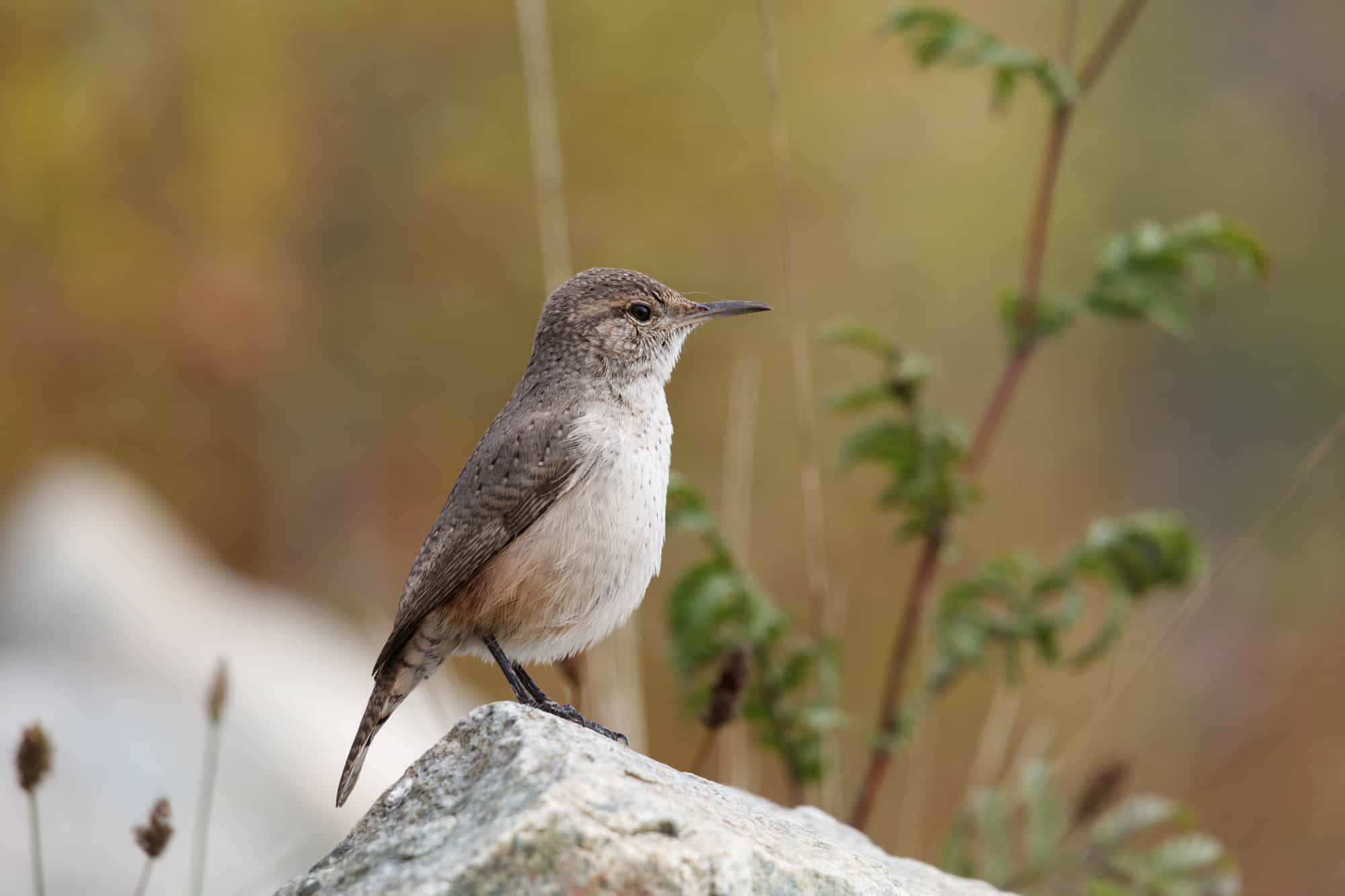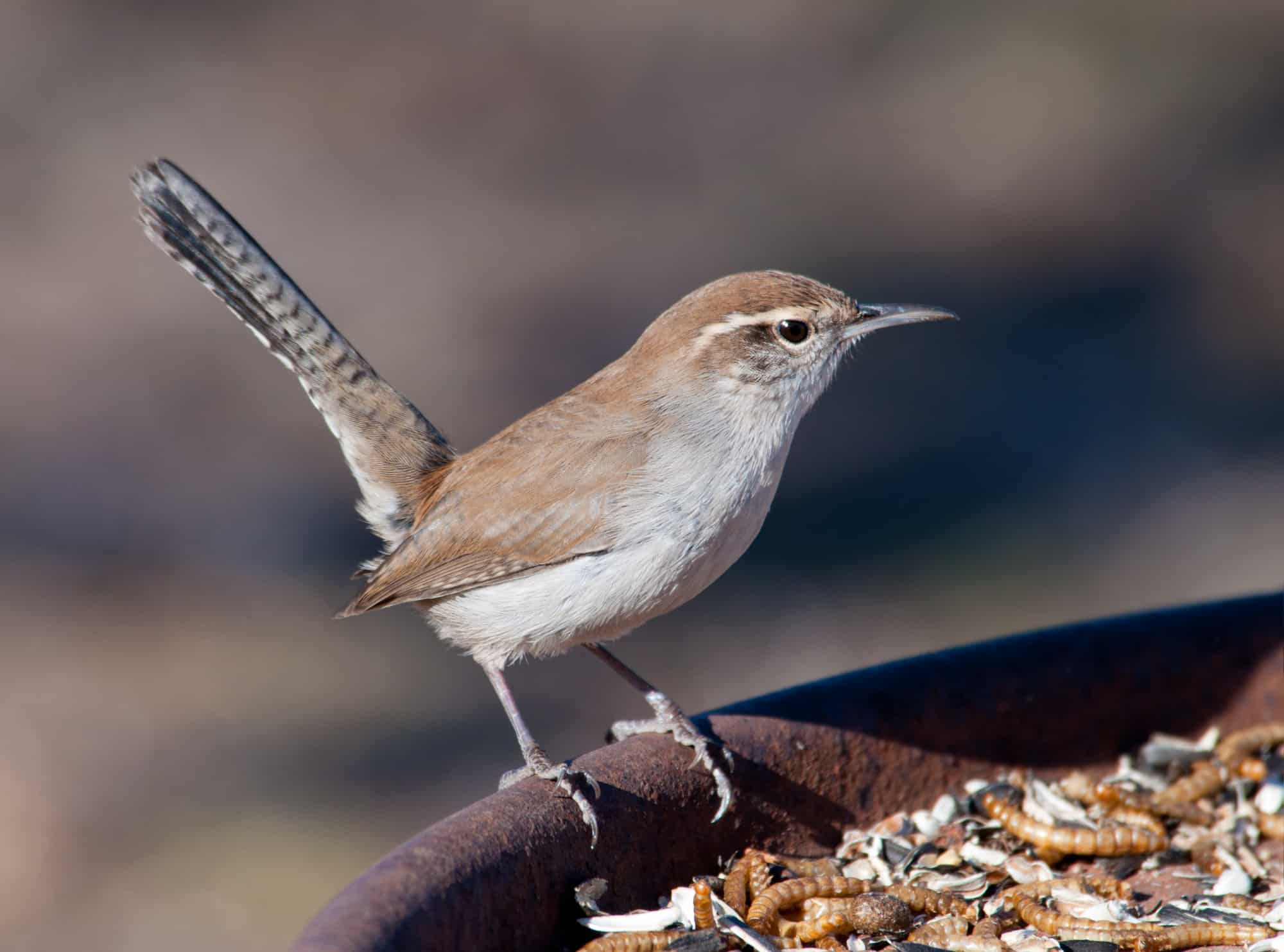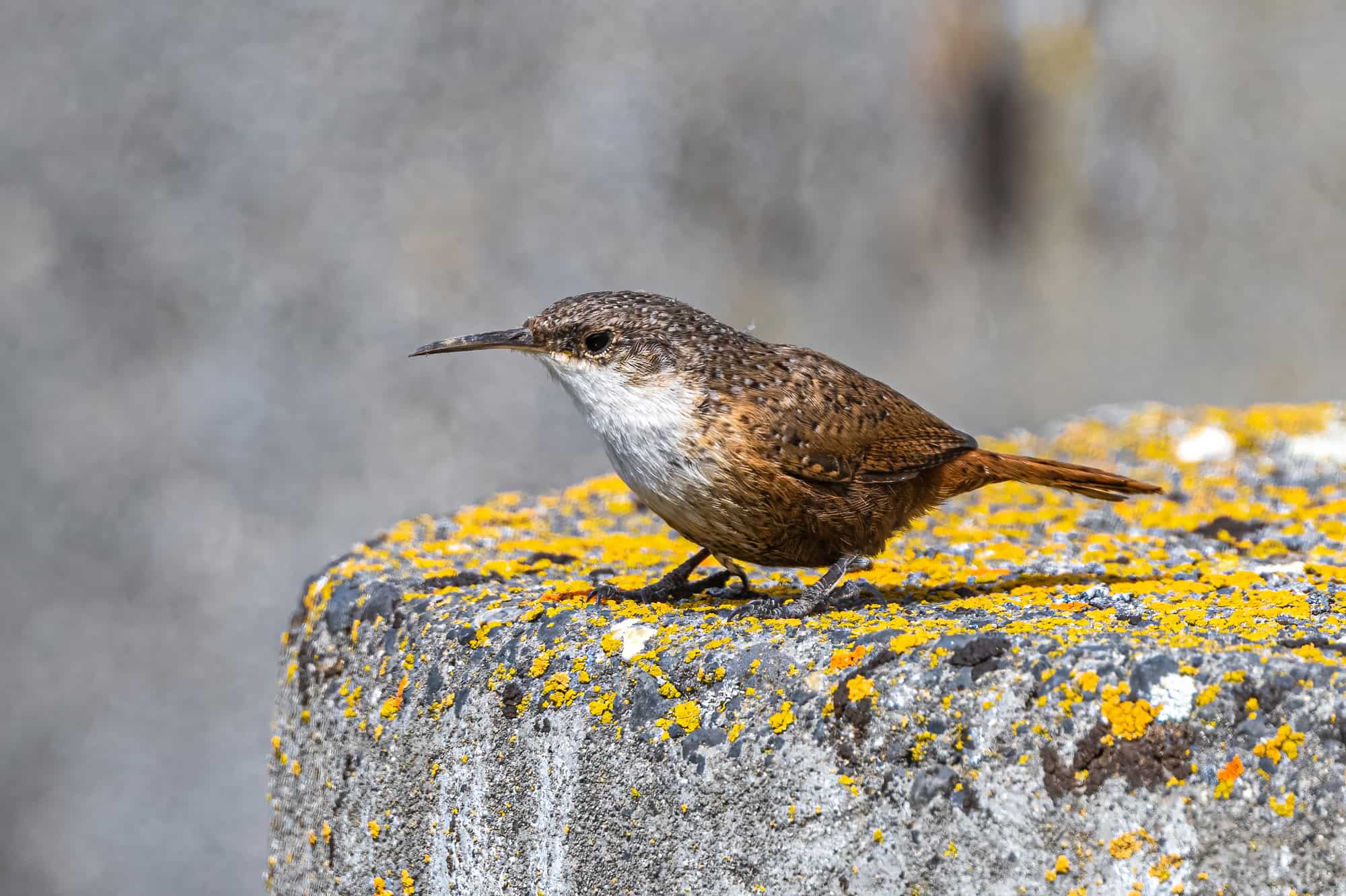Nebraska is a midwestern state that lies at the geographical center of the USA. Indeed, an old tourism slogan for the state used to read: ‘Where the West Begins’.
This puts Nebraska at an interesting point on the map for many bird species. Like many other bird families, wrens are largely divided into eastern and western species, and a central state like Nebraska is where many of them come together.
Nine of the eleven native wrens in the USA have been recorded in Nebraska – an impressive proportion for any state. But because it lies at the edge of the territories of many species, most wrens are fairly rare here.
One of the reasons for this is that Nebraska has a fairly tough continental climate. The highest temperature recorded here was 118°F, and the coldest was 47°F. Wrens need to be very hardy if they’re to survive year-round here, and many of the winter species can only be found in the milder southeastern corner of the state.
But exactly which wren species can be found in the ‘Cornhusker State’? You probably won’t guess all nine of them, but why not see how many you can get before scrolling down?
Wrens in Nebraska, Starting With the Most Frequently Seen
House Wren

- Scientific Name: Troglodytes aedon
- Length: 4.3-5.1 in (11-13 cm)
- Weight: 0.3-0.4 oz (10-12 g)
- Wingspan: 5.9 in (15 cm)
Despite being purely summer visitors in Nebraska, House wrens are by far the most common wren in the state when we put summer and winter records together. They’re recorded in almost 40% of birdwatchers’ reports on ebird.org during the warmer months.
House wrens are small, slender birds with a fairly uniform brown or gray color, and have an impressive voice for their tiny size. Listen out for their noisy, high-pitched warbles coming from the tangles of overgrown vegetation that they typically abide in.
Although house wrens don’t visit backyard feeders, you can still attract them to your garden by offering them a gourd birdhouse, and by avoiding the use of pesticides that decimate the insects that these birds rely on as food.
House wrens are seemingly unafraid of humans or even large predators. They’ll often pipe up their alarm calls when people or pets approach, and can even be seen chasing off larger birds from their nest sites!
Carolina Wren

- Scientific Name: Thryothorus ludovicianus
- Length: 4.7-5.5 in (12-14 cm)
- Weight: 0.6-0.8 oz (18-22 g)
- Wingspan: 9 in (23 cm)
Carolina wrens are one of the most common backyard birds of the eastern states, but their range only extends to the milder southeastern corner of Nebraska. While they’re recorded on around 30% of report cards in neighboring Missouri, they’re only seen by around 3% of birdwatchers in Nebraska.
One of the reasons that Carolina wrens seldom venture this far west is because they’re a sedentary, rather than migratory species. The cold winters of Central Nebraska may currently prove too cold for them, but some reports suggest they’re moving west as the climate warms.
Carolina wrens can occasionally be attracted to backyard bird feeders during the winter and are one of the few songbirds in Nebraska to sing during the colder months. Listen out for their rolling chant of repetitive phrases to help locate and identify them.
Carolina wrens mate for life and you can increase the chances of them nesting in your garden by building them a suitable birdhouse.
Marsh Wren

- Scientific Name: Cistothorus palustris
- Length: 3.9-5.5 in (10-14 cm)
- Weight: 0.3-0.5 oz (9-14 g)
- Wingspan: 5.9 in (15 cm)
True to their name, marsh wrens are wetland birds and are almost never seen anywhere without standing water. They’re particularly associated with dense vegetation such as cattails, generally found in marshland.
Over the years, it’s been debated whether the eastern and western subspecies of marsh wren should be considered two distinct species. As a place where the two subspecies meet, Nebraska has been the site of numerous investigations into these mysterious birds.
Over the last 35 years, scientists have determined that eastern marsh wrens are restricted to the northeast of the state, whereas western marsh wrens are found in the western two-thirds of Nebraska, north of the Platte River.
One of the ways that the two subspecies may keep themselves separate is their fierce territorial behavior. Marsh wrens are renowned for their aggressive streak and will sometimes destroy their rivals’ nests in their bid to dominate a particular locality!
Listen out for the boisterous, buzzy, and distinctive songs that they will occasionally sing all night long.
Sedge Wren

- Scientific Name: Cistothorus stellaris
- Length: 3.9-4.7 in (10-12 cm)
- Weight: 0.3oz (7-10 g)
- Wingspan: 4.7-5.5 in (12-14 cm)
With a relatively confined range, sedge wrens are the rarest regularly occurring wrens in the USA. The western region of Nebraska, however, falls within their breeding range, making this region a relatively good place to spot this elusive species.
The sedge wren is a bit like a smaller and more timid version of the marsh wren. Although they are closely related, the sedge wren has a shorter tail and lighter coloration than their larger relative.
Appearances aside, sedge wrens also typically inhabit slightly drier terrain than marsh wrens. As well as the upper edges of marshes, they can be found in damp meadows, too.
But the secretive nature and deft camouflage of the sedge wren make them incredibly difficult to spot. Instead, listen out for their repetitive chatter that’s often broadcast from atop sedge grass or willows where they live.
Rock Wren

- Scientific Name: Salpinctes obsoletus
- Length: 4.9-5.9 in (12.5-15 cm)
- Weight: 0.5-0.6 oz (15-18 g)
- Wingspan: 8.7-9.4 in (22-24 cm)
The most common of the westerly species of wren in Nebraska is the rock wren. Central Nebraska marks the eastern frontier of this species’ regular breeding grounds.
But nowhere in the state can rock wrens be considered common birds, and they’re almost never seen in the east.
The good news is that rock wrens are relatively easy to locate and identify. With their long bill, large size, and pale colors, the rock wren is difficult to mistake for any other. And just as marsh wrens remain faithful to their wetland homes, rock wrens are rarely found far from rocky terrain.
During the breeding season, the male rock wren moves a substantial collection of jumbled stones to his nest site. These can weigh more than 3 lb in total – a Herculean feat for a bird that only weighs half an ounce!
Winter Wren

- Scientific Name: Troglodytes hiemalis
- Length: 3.1-4.7 in (8-12 cm)
- Weight: 0.3-0.4 oz (8-12 g)
- Wingspan: 4.7-6.3 in (12-16 cm)
Among this family of tiny birds, winter wrens share the title of being the smallest of them all with one other species. Almost identical in size to the Pacific wren, these two species often weigh less than two credit cards!
But because they’re more of an easterly bird, winter wrens are only normally found in the milder southeasterly fringes of Nebraska. In the rest of the state, they may occasionally be observed during the spring and fall migrations when they fly to and fro their breeding grounds in Canada.
Damp woods and shady thickets are the primary habitats for winter wrens, whose Latin name ‘Troglodytes’ means ‘hole-dweller’. Their hole-dwelling tendencies come to light in winter when large numbers of them can sometimes gather together to stay warm in birdhouses!
Winter wrens have a particularly impressive voice – a high-pitched, complex warble sung with formidable zeal and gusto!
Bewick’s Wren

- Scientific Name: Thryomanes bewickii
- Length: 5.1 in (13 cm)
- Weight: 0.3-0.4 oz (8-12 g)
- Wingspan: 7 in (17.8cm)
Our second western species of wren is Bewick’s wren. At the beginning of the 20th century, Bewick’s wren was more frequently seen in the Central States but is now considered an accidental species in Nebraska. Sadly, they haven’t been reported here for several years.
The demise of this bird in the east still remains a mystery to ornithologists. Some scientists blame the aggressive behavior of house wrens for their decline, while others cite habitat loss and climate change as critical factors.
Whatever the cause, it’s surely sad to have lost such a beautiful and elegant species of wren in the region. Bewick’s wren has a white-gray underside, long white eyebrows, and a pretty, long tail with white corners.
It can be challenging to learn Bewick’s wren’s buzzy and cheerful song because it varies so much between regions! Luckily their unique appearance makes them relatively easy to recognize. Be sure to report any sightings to a local authority!
Pacific Wren

- Scientific Name: Troglodytes pacificus
- Length: 3.1-4.7 in (8-12 cm)
- Weight: 0.3-0.4 oz (8-12 g)
- Wingspan: 4.7-6.3 in (12-16 cm)
Until a scientific study in 2008 revealed breeding isolation, Pacific wrens were considered to be the same species as the winter wren. Because winter wrens breed in the east, and Pacific wrens in the west, the two groups have evolved into distinct species over time.
Pacific wrens have a more confined range than their eastern cousins, though, and tend to hug the Pacific coast. Distinguishing the two species by sight is very difficult, but there have been reports of Pacific wrens in the Nebraska National Forest.
Like winter wrens, they like to spend most of their time in shady thickets and woodlands and may startle passers-by with their booming voices.
While their dark brown color and round shape are similar to that of the winter wren, their song tends to be a bit faster and less musical than their eastern cousins. Listening to their songs side by side proves to be the best way to distinguish them.
Canyon Wren

- Scientific Name: Catherpes mexicanus
- Length: 4.5-6.1 in (11.4-15.4 cm)
- Weight: 0.3-0.7 oz (9.9-18.3 g)
- Wingspan: 7.1-7.9 in (18-20 cm)
The Canyon wren of the western states tends to be fairly sedentary and rarely ventures this far east. They’re considered an accidental species in Nebraska, and the western fringes of the state are the most likely regions in which to find them.
The good news is that if you see a Canyon wren, you’re unlikely to mistake it for any other bird. Their extremely long bill and white chest make them a singular-looking species.
Their cascading song is not only unique but also one of the most gorgeous birdsongs you could hope to hear.
If you do manage to spot or hear a Canyon wren in Kansas, try to get a photo or audio recording and report it to a local bird-watching authority such as Kansas Ornithological Society.
Conclusion
Nebraska has a huge diversity of wren species, although most of them are fairly rare here.
House wrens are the only truly common and widespread species, but there are endless opportunities to encounter other species across the different regions of the state, too.
Wrens only account for a tiny portion of the 450 bird species that have been recorded here. If you had to pick 25 species that represent Nebraska, which would they be? That was our task when we created our guide to the 25 Most Iconic Birds of The Cornhusker State.

